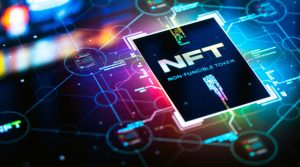In recent years, the concept of non-fungible tokens (NFTs) has gained significant attention in various industries. From art and music to virtual real estate, NFTs have revolutionized the way we perceive ownership and value in the digital realm. Now, this innovative technology is making its way into the scientific community, offering a new approach to tokenizing scientific literature. In this article, we will explore the concept of NFTs for journal articles and research papers, highlighting their potential benefits and implications for the academic world.
Introduction
Scientific literature serves as the foundation for knowledge dissemination and progress in various fields of study. However, the traditional publishing model has its limitations, including issues with accessibility, ownership, and attribution. NFTs offer a potential solution by leveraging blockchain technology to tokenize scientific articles and research papers.
Understanding NFTs
NFTs are unique digital assets that can represent ownership or proof of authenticity for a specific item. Unlike cryptocurrencies such as Bitcoin or Ethereum, which are fungible and interchangeable, NFTs are indivisible and distinguishable. They are built on blockchain technology, providing a decentralized and transparent platform for transactions.
NFTs, or non-fungible tokens, are unique digital assets that represent ownership or proof of authenticity for a specific item or piece of content. Unlike cryptocurrencies such as Bitcoin or Ethereum, which are interchangeable, NFTs are indivisible and distinguishable, providing a one-of-a-kind value. Built on blockchain technology, NFTs offer a decentralized and transparent platform for recording and verifying transactions. They have gained popularity in various industries, including art, music, and now, scientific literature. NFTs have the potential to revolutionize the way we perceive ownership and value in the digital realm, opening up new possibilities for tokenizing and trading unique assets, including journal articles and research papers.
The Value of Scientific Literature
Scientific literature holds immense value within the academic community. It represents years of research, experimentation, and analysis, and contributes to the advancement of knowledge. However, the current system often restricts access to scientific articles through paywalls and subscription models, limiting the dissemination of valuable information. Scientific literature holds immense value within the academic community and society at large. It represents the culmination of rigorous research, experimentation, and analysis conducted by experts in various fields. Scientific literature serves as the foundation for knowledge dissemination, advancement of understanding, and progress in fields ranging from medicine to engineering. It provides a platform for sharing groundbreaking discoveries, innovative methodologies, and critical insights that shape the course of scientific inquiry. The value of scientific literature lies in its ability to inform, educate, inspire, and drive further research and development, ultimately contributing to the betterment of society and the expansion of human knowledge.
Tokenizing Scientific Literature with NFTs
Enhancing Authenticity and Attribution
By tokenizing scientific literature with NFTs, researchers and authors can establish a verifiable record of ownership and authorship. Each article or research paper can be associated with a unique token, allowing easy identification and tracking of its origin. This can prevent issues such as plagiarism and enhance the credibility of published work.
Facilitating Peer Review and Collaboration
NFTs can streamline the peer review process by providing a secure and transparent platform for researchers to share their work. The immutable nature of blockchain ensures that reviewers’ comments and suggestions are recorded and attributed accurately. Collaborative efforts can be easily tracked, fostering a culture of open science and facilitating interdisciplinary collaborations.
Unlocking New Revenue Streams
Tokenizing scientific literature opens up new possibilities for revenue generation. NFTs can be sold or auctioned, allowing researchers to monetize their work directly. Furthermore, the tokenized articles can be licensed for educational purposes or commercial use, providing additional income streams for authors and institutions.
Preserving Intellectual Property Rights
Intellectual property rights are crucial in the scientific community. NFTs can offer a secure mechanism for protecting these rights, as ownership and authorship information is immutably recorded on the blockchain. This ensures that researchers receive proper recognition and credit for their contributions.

Challenges and Considerations
While the concept of tokenizing scientific literature brings exciting possibilities, it also presents challenges and considerations that need to be addressed.
Accessibility and Open Science
Efforts must be made to ensure that tokenization does not hinder accessibility to scientific knowledge. Open science initiatives should be integrated into the implementation of NFTs for scientific literature to maintain inclusivity and enable broader dissemination of research findings.
Scalability and Energy Consumption
As the volume of scientific literature is vast, scalability becomes a critical concern. The blockchain infrastructure supporting NFTs needs to be capable of handling the increased demand without compromising efficiency. Moreover, energy consumption associated with blockchain technology should be minimized to mitigate environmental impacts. Scalability and energy consumption are important considerations when implementing NFTs for scientific literature. The blockchain infrastructure supporting NFT transactions must be capable of handling the increasing volume of articles without compromising efficiency. Moreover, efforts should be made to minimize the energy consumption associated with blockchain technology to mitigate environmental impacts.
Regulatory and Legal Frameworks
Tokenizing scientific literature introduces legal and regulatory complexities. Intellectual property rights, licensing agreements, and copyright issues need to be carefully addressed to protect the interests of researchers, authors, and publishers. Developing appropriate frameworks and guidelines will ensure a smooth transition into the NFT ecosystem.
Future Implications and Possibilities
The adoption of NFTs for scientific literature has the potential to reshape the academic landscape. It can foster greater collaboration, transparency, and recognition within the scientific community. Furthermore, it may lead to innovative ways of funding research, incentivizing participation, and democratizing access to knowledge.
- Democratization of Knowledge: NFTs can empower individuals by providing direct access to scientific literature, breaking down barriers created by paywalls and subscription models.
- Enhanced Collaboration: Tokenization enables seamless collaboration among researchers, fostering interdisciplinary cooperation and accelerating the pace of scientific discovery.
- New Funding Models: NFTs open up innovative avenues for funding research projects through token sales, auctions, and licensing, potentially reducing reliance on traditional grant systems.
- Enhanced Peer Review: Blockchain-based NFTs can improve the transparency and accountability of peer review processes, ensuring accurate attribution and enhancing the overall quality of scientific publications.
- Increased Recognition for Researchers: NFTs can provide a verifiable record of authorship and ownership, enabling researchers to receive proper recognition and credit for their contributions.
- Preservation of Intellectual Property: Blockchain’s immutability ensures the preservation of intellectual property rights, safeguarding researchers’ work from unauthorized use or plagiarism.
- Evolution of Metrics: With NFTs, new metrics for assessing the impact and value of scientific literature can be developed, moving beyond traditional citation-based metrics to more comprehensive and nuanced evaluations.
- Expanding Access to Developing Countries: Tokenization can help overcome the limitations of access to scientific literature in developing countries, promoting global knowledge sharing and collaboration.
- Data-driven Insights: NFTs can facilitate the collection and analysis of metadata associated with scientific articles, providing valuable insights into trends, collaborations, and impact within the scientific community.
- Educational Applications: Tokenized scientific literature can be leveraged for educational purposes, creating interactive learning experiences and improving science communication.
- Preservation of Scientific Heritage: NFTs can contribute to the preservation and archiving of scientific literature, ensuring the long-term availability and accessibility of valuable research for future generations.
- Interoperability and Interconnectivity: As the adoption of NFTs for scientific literature grows, the potential for interoperability between different platforms and systems can facilitate seamless integration and exchange of knowledge.
- Evolution of Publishing Models: The introduction of NFTs may lead to the evolution of publishing models, with new platforms and decentralized networks emerging to support tokenized scientific literature.
- New Forms of Collaboration Incentives: NFTs can incentivize collaboration by offering rewards, royalties, or tokenized ownership shares, promoting a culture of knowledge sharing and cooperative research efforts.
- Bridging Academia and Industry: Tokenization can bridge the gap between academia and industry by facilitating the transfer and commercialization of research findings, fostering innovation and societal impact.
These future implications and possibilities highlight the transformative potential of NFTs in revolutionizing the way we create, share, and access scientific knowledge.
Conclusion
Tokenizing scientific literature through NFTs offers a promising avenue for addressing the limitations of the traditional publishing model. By enhancing authenticity, facilitating collaboration, unlocking new revenue streams, and preserving intellectual property rights, NFTs can revolutionize the way we interact with and benefit from scientific knowledge.
FAQs
Q1: How can NFTs enhance the authenticity of scientific literature? NFTs provide a unique token associated with each article, establishing verifiable ownership and authorship. This prevents plagiarism and enhances the credibility of published work.
Q2: Can researchers monetize their work through tokenized scientific literature? Yes, researchers can sell or license their tokenized articles, allowing them to directly monetize their work and create additional revenue streams.
Q3: What are the challenges of tokenizing scientific literature with NFTs? Challenges include ensuring accessibility to scientific knowledge, scalability of the blockchain infrastructure, and addressing regulatory and legal frameworks.
Q4: How can NFTs benefit peer review and collaboration? NFTs provide a secure and transparent platform for peer review, ensuring accurate attribution of reviewers’ comments and fostering a culture of open science and collaboration.
Q5: What is the future outlook for NFTs in scientific literature? The adoption of NFTs has the potential to reshape the academic landscape by promoting collaboration, transparency, and recognition, and democratizing access to scientific knowledge.





